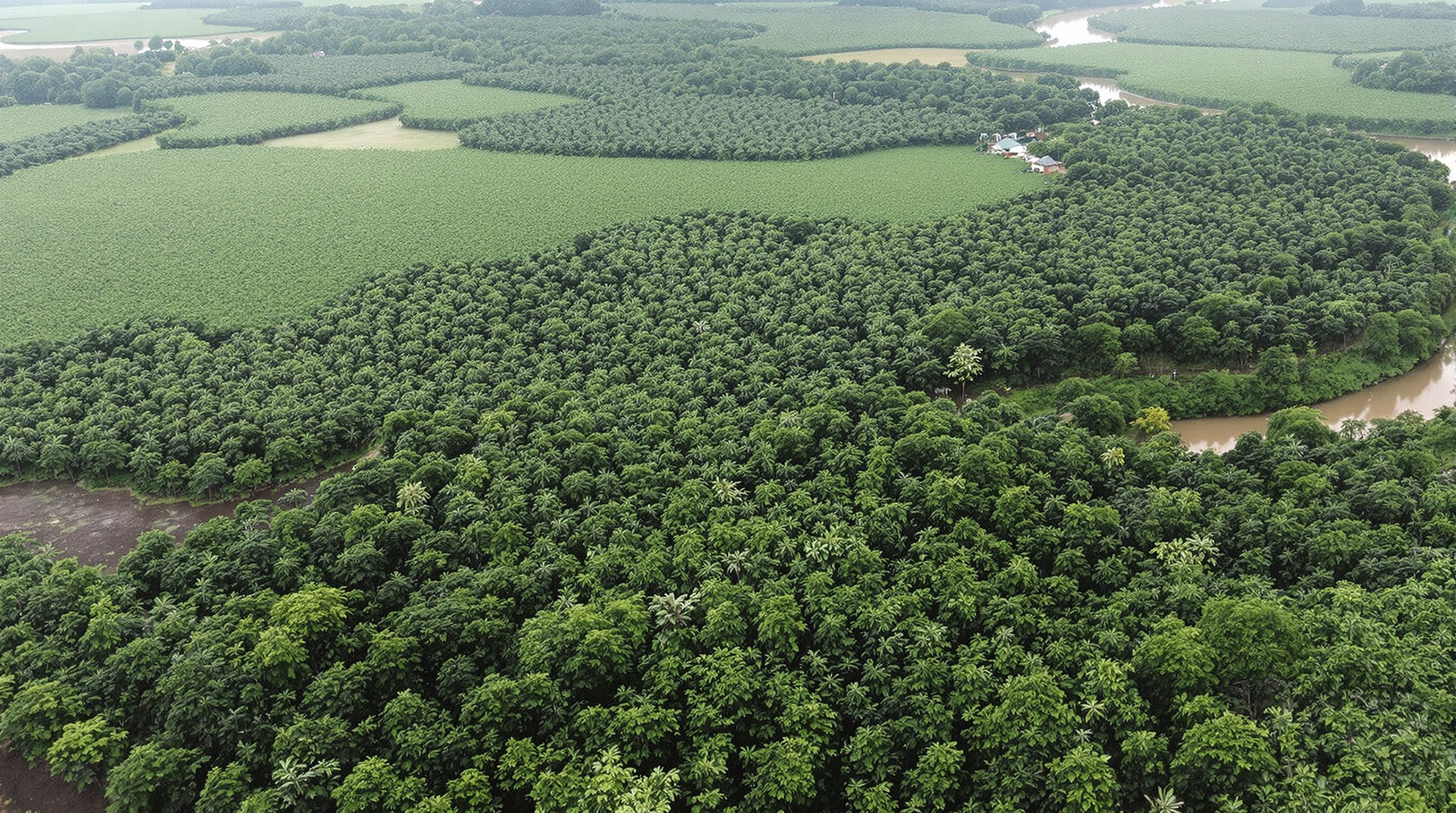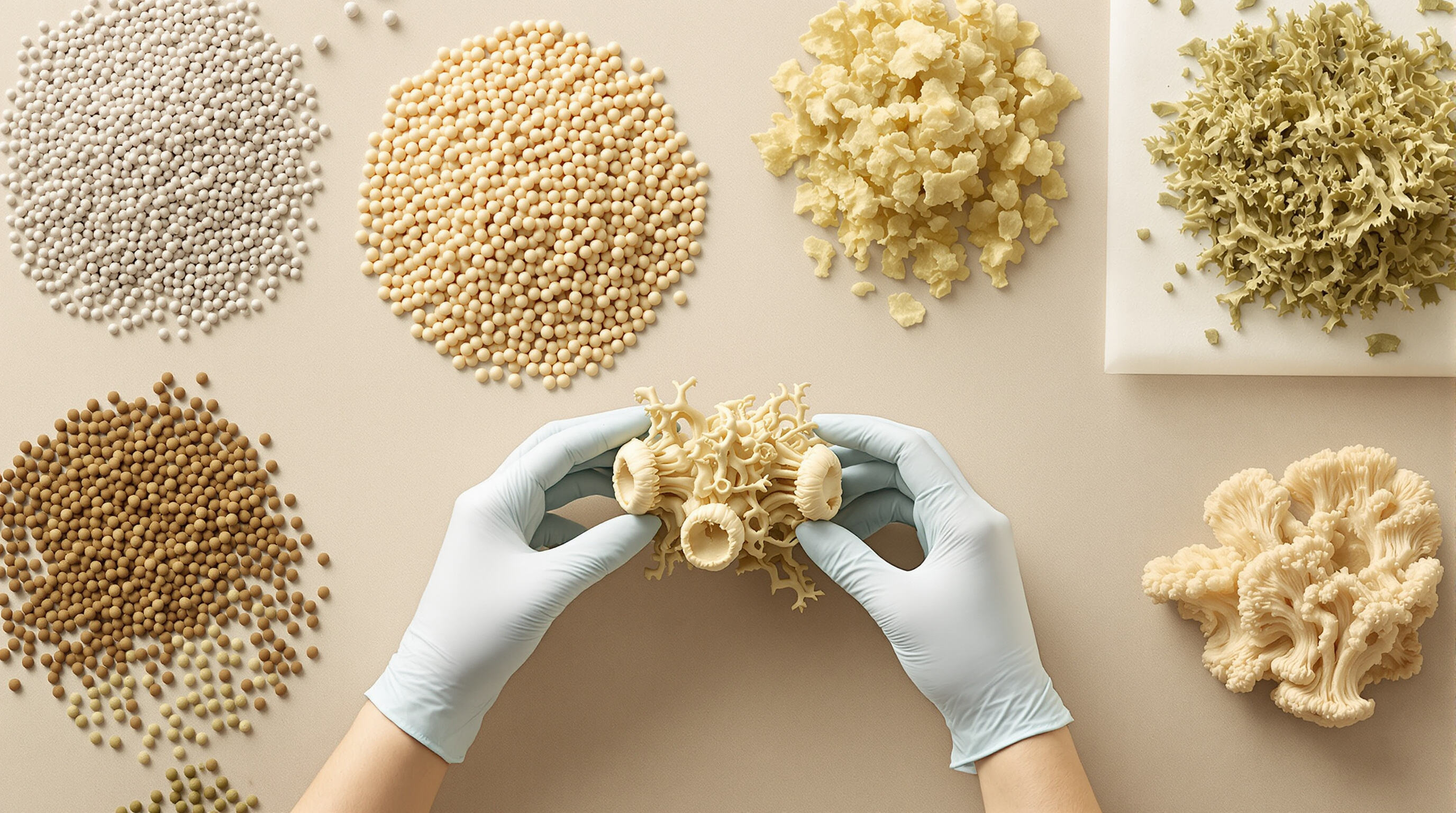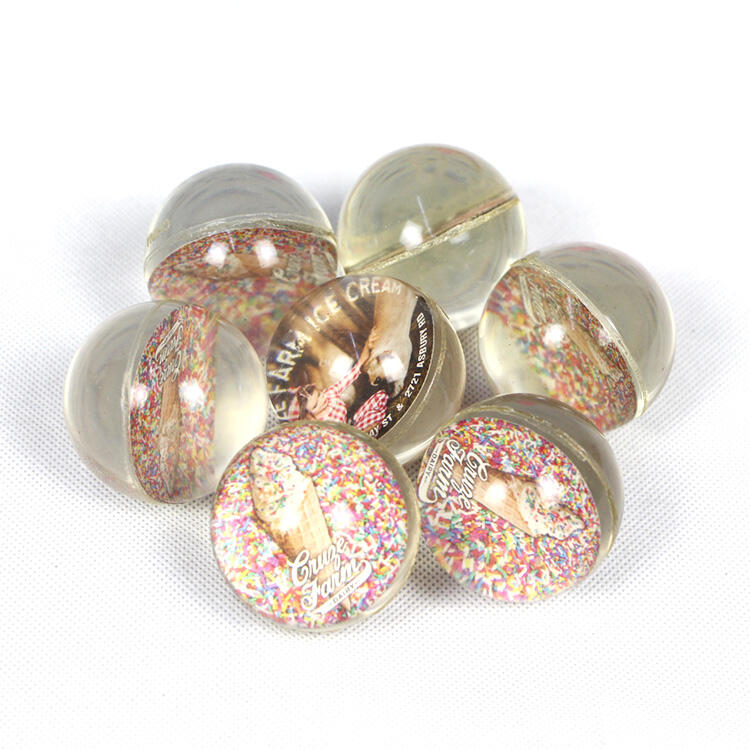ההשפעה הסביבתית של צעצועי каoutchoum

הבנה של האפקט האקולוגי של צעצועי ילדים וחיות מחמד
ייצור צעצועי каוץ' גורם להכרת יערות מאחר שחברות מרחיבות את מטעי עצי ההבאה, במיוחד באזור דרום מזרח אסיה שבו מערכות האקולוגיה כבר שבירות. מטעים ענקיים אלו basically מוצאים את כל המים בסביבה, מה שמשאיר קהילות מקומיות מתמודדות עם מחסור במים, ומייצרים כ-8.5 מיליון טון métre של פסולת каוץ' בכל שנה. צעצועים טבעיים לא נעלמים במהירות, גם הם יכולים להישאר במגרקי פסולת anywhere בין חמישים ל-80 שנה לפני שנמסים לחלוטין. זה עדיין הרבה יותר מזמן מצעצועים פלסטיים רגילים שלא נעלמים בכלל. אפילו בחינה של צעצועי עישון לחיות מחמד מלמדת אותנו משהו חשוב. הם מהווים 12 אחוז מכלל הצעצועים שנוחתים בפחי האשפה שלא ניתן لإ recycling שלהם, לפי מחקר של המכון העולמי ליתכנות ב-2023. זה מצביע בבהירות על הדרוש לחומרים טובים יותר לא רק לצעצועים של ילדים אלא גם למוצרים המיועדים לבעלי חיים.
גומי לעומת פלסטיק: השוואת קיימות ופער פסולת
צעצועים פלסטיים שוכנים במזבלות מעל 500 שנה ומשחררים כימיקלים מזיקים המפריעים לאנדוקרין הסביבתי. גומי טבעי נראה כאלטרנטיבה טובה יותר מבחינת קיימות. על פי ממצאים אחרונים שלائיט הקואליציה לملوث הפלסטיק, כשלושה מתוך ארבעה צעצועים פלסטיים מסורתיים מכילים רמות מסוכנות של פתלטים, בעוד שרק כ אחד מתוך חמישה צעצועי גומי כן. עדיין שווה לציין, ייצור גומי דורש גם הוא כמות רבה של מים - בערך 2,500 ליטר רק לייצור קילוגרם אחד. בהסתכלות על מחזור החיים המלא שלהם, צעצועי גומי יוצרים כ matter 40 אחוז פחות פליטת פחמן בהשוואה לפלסטיים, במיוחד אם הם נגזרים מمزורות עץ גומי מנהלות באופן קיים שפויות, עוקבות אחר פרקטיקות קציר תקינות ומשמרות מגוון ביולוגי.
חומרים מתכלהים ביולוגית בצעצועים גומיים: הפחתת נזק סביבתי ארוך טווח
חברות מתקדמות מערבבות ספוג טבעי עם חומרים כמו סיבי קליפת אורז וקרק ליצירת חומרים שמתפרקים מהר בהרבה מ каוצ'וק רגיל. תערובות חדשות אלו יכולות להתפרק בכ-90% בתוך 3 עד 5 שנים לעומת 80 שנה של חומרי каוצ'וק מסורתיים שנעלמים. בדיקות עצמאיות גילו שהתערובות אלו נשמרות טוב כצעצועים אך מקטינות את זיהום המיקרופלסטיק בשני שליש על פי מחקר של המועצה לחומרים אקולוגיים בשנה שעברה. לעתיד הרחוק, כבר בפיתוח каוצ'וקים שמסתבכים במים שיועדו במיוחד לצעצועים לשימוש באמבטיה, וכן סיליקונים על בסיס צמחי לצעצועים ללדת שיניים. דגימות מוקדמות מראות שהחומרים הללו מתפרקים בקצב דומה לפסולת מזון ושארית גינה כשהם נזרקים בצורה תקינה.
ספוג טבעי כחומר בר-קיימא בייצור צעצועים
מהו ספוג טבעי ולמה הוא אידיאלי לצעצועים ברזיליים
caoutchouc naturel provient de la sève des arbres Hevea brasiliensis et constitue une option écologique par rapport aux matières synthétiques artificielles. Selon des recherches menées en 2022 par le centre de recherche environnementale Smithsonian, les plastiques peuvent mettre environ 450 ans à se dégrader. Le caoutchouc naturel, quant à lui, se décompose beaucoup plus rapidement, généralement entre un et cinq ans s'il est placé dans le bon environnement. Le matériau est très souple tout en étant suffisamment résistant pour être utilisé dans des objets tels que des anneaux de dentition pour bébés, des jouets pour le bain ou des friandises pour chiens. Ce qui le distingue, c'est qu'il ne contient pas de substances nocives comme les phtalates ou les plastifiants PVC. Surtout, il ne contient aucun métal lourd. Ces qualités séduisent particulièrement les parents et les propriétaires d'animaux souhaitant que leurs enfants et leurs animaux jouent avec des produits ne libérant pas de toxines.
Pratiques durables de récolte et leur impact sur les chaînes d'approvisionnement en caoutchouc
כשמדובר בייצור ספוגי גומי בצורה מוסרית, רוב החברות פונות כרגע למזונות מאובטחות של FSC. מפעלים אלו מרכזים את תשומת הלב על שמירה על מערכות אקולוגיות תקינות, וכן על טיפול הוגן בעובדים. כשליש שני של יצרני הרכיבים שמתעניינים בקיימות החלו לעבוד עם ספקים שמפעילים שיטות טיפוח. טכניקה זו מאפשרת לעצי הגומי לחיות זמן חיים ארוך יותר, ולעיתים מוסיפה 20 או אפילו 30 שנה נוספות לתקופת הייצור הפועלת שלהם. מרכז חדשנות הגומי הטבעי מבצע אף הוא עבודה מעניינת. הם מפתחים דרכים להכניס מחדש חומרים למחזור הייצור, מה שמפחית את צריכה המים בתהליך העיבוד ב-40 אחוז בערך. חברת צמיגים גדולה הוציאה לאחרונה הצהרה על כוונתה להשיג את כל הגומי שלה בצורה קיימית עד אמצע המאה. גם אם זה נשמע מהפנט, זה יוצר לחץ אמיתית בתעשייה, כולל בתעשיית הצעצועים, שם רכיבי גומי עדיין נפוצים מאוד.
מקרה לדוגמה: מיזוג מונעציית ספוגי גומי קיימים
מותג צעצועים אירופאי מדגים קיימות על ידי שימוש בגומי טבעי המאומת על ידי FSC עבור טבעות הינוק הנמכרות ביותר שלו. תכונות מרכזיות כוללות:
- תבנית תכובלת עשוי מגזע פטריית עשן
- בטיחות מאומתת ASTM F963 למסס של תינוקות
-
משלוחים נטרליים פחמן באמצעות שותפים לאנרגיה מתחדשת
הגישה שלהם הפחיתה את פסולת המעלית ב-12 טון מדי שנה, מה שמוכיח שpractices אקולוגיות יכולות להתרחב מבלי להקריב רווחיות.
ביקוש צרכני והזזת שוק לקראת צעצועי גומי בר קיימא
Рост העדפת הורים ובעלים של חיות מחמד לצעצועי גומי ללא רעלים וחומרים כימיים
משפחות מעדיפות כיום צעצועי גומי המאומתים כחופשיים מ-PVC, פתלטים וביספנול A, כאשר 63% מהבעלים של חיות מחמד מחפשים בactively צעצועי עישון בר קיימא, לפי נתוני שוק 2025. במקביל, 58% מההורים מציינים שהשליכו צעצועי פלסטיק עקב דאגות סביב זיהום המיקרופלסטיק, מה שמגביר את הביקוש לחלופות של גומי טבעי.
מגמות שוק: כיצד פיתוח בר קיימא מוביל לחדשנות בעיצוב צעצועי גומי
יצרנים מאמצים מודלי ייצור מעגליים, כאשר 42% מצעצועי הגומי החדשים כוללים 30–100% תוכן מחזור או מתכלה ביולוגית נכון לשנת 2025. המעבר מתאים לסמוכי פיתוח בר קיימא גלובליים המחייבים הפחתה של 50% בשימוש בפלסטיק חדש עד שנת 2030. העמידות האינherentית של הגומי נותנת לו אורך חיים של 27% יותר ארוך מאשר סיליקון או פלסטיק על בסיס צמחי בבדיקות לחץ של ילדים צעירים.
תובנה מתוך נתונים: 68% מההורים מעדיפים חומרים בטוחים-אקולוגיים לילדים צעירים
סקר צרכנים משנת 2025 חשף:
- 68%מעדיפים תעודות של חוסר רעילות ברכישת צעצועי גומי ללדת שיניים
- 71%רואים בתכונת ההתכלה הביולוגית הכרח לצעצועי רחצה
-
59%מוכנים לשלם 20%علاوة על אריזה שניתן להכניס לקומפוסט
נתונים אלו מאשרים את ההפצה הכפולה של הגומי: שילוב של ביטחון לשימושנים רגישים עם תמשכות סביבתית נמוכה יותר בהשוואה לפלסטיק.
יתרונות העמידות והבטיחות של צעצועי גומי עבור ילדים וחיות מחמד
למה גומי מוביל את שוק צעצועי הלדת והעישון
הגמישות והעיקשות של הגומי היא הסיבה שבגינה בוחרים בו עבור צעצועי נשיכה ודברים שמחפשים חיות מחמד לנגוס בהם. אופציות פלסטיק נוטות להסתrack כאשר הן מופנו למאמץ, אך גומי טבעי מחזיק מעבר אפילו לנשיכות התוקפניות ביותר מבלי לאבד את צורתו. וזה חשוב לא פחות, שכן לפי סקר הביטחון ההורי מהשנה שעברה, כ שני שליש מההורים מחפשים בפירוש חומרים שיכולים לעמוד בנשא יומיומי. יתרון נוסף? גומי פשוט לא נשבר בקלות כמו חומרים אחרים. כולנו ראינו את הפסולת הפלסטיקית הקטנה שמתפזרת בכל השטח לאחר שצעצוע נשבר, נכון? עם צעצועי גומי יש סיכון מזערי יותר שהדברונים יבלעו פירורים מסוכנים במהלך המשחק.
צעצועים מגומי לא רעיל: יתרונות הבטחה לתינוקות ולחיות מחמד
אישור כמו ASTM F963 מסייע לוודא שחייכות גומי לא מכילות חומרים מסוכנים כמו BPA, פתלטים, או מתכות כבדות. מחקר חדש מ-2024 הראה משהו מעניין גם כן - כאשר חיות מחמד שיחקו עם צעצועים עשויים מגומי טבעי, האלרגיות שלהם נראו משתפרות די מעט. המספרים? 34% פחות תגובות מאשר עם צעצועים פלסטיק רגילים. יותר ויותר בעלי כלבים מתחילים להבחין בהבדל הזה. באירופה, חברות צעצוע רבות כבר התחילו לעבור לגומי מובחר מהצמחים, כי הן צריכות לציית לתקנות הקשות של האיחוד האירופי בנושא בטיחות המוצרים. יש אנשים שבאמת מעדיפים לתמוך במותגים שעושים עודף למען בריאות בעלי חיים.
צעצועים אורגניים לTeething, אמבטיה וצעצועים אינטראקטיביים מ каוץ ל ילדים וחתולים
צעצועים מרובר יומיום מצליחים להיות גם בטוחים וגם טובים לכדור הארץ. מבחנים מראים שצעצועים מרובר פולטים ביולוגית נמסים כ־12 פעמים מהר יותר מאלו שמיוצרים מחומרים כמו PVC, על פי מחקרי פסולת שנערכו לאחרונה. חברות מסוימות עורבות רובר טבעי עם קמח תירס שעובר רקבון בעת ייצורן צעצועים אינטראקטיביים. הצעצועים האלה שומרים על עמידות מספקת לשעת משחק אך עדיין עומדים בדרישות של בעלים של חיות מחמד המודעים לסביבה, כ־70–75% על פי דוח מגמותペット גלובלי משנת שעברה. בהתחשב גם בהשפעה שלהם על הסביבה ועל שמירת הבטחה של ילדים וחיות מחמד, רובר הופך להיות החומר המועדף לייצור צעצועים מוסרי על ידי יצרנים מכל העולם.
חדשנות בחומרים ברת-קיימא לצעצועים מרובר עתידיים

מעבר לרובר טבעי: חומרים חדשים ברת-פסולת וחומרים מחזוריים
צעצועים שמיוצרים מ каוץ' מתחילים להשתמש בסוגי חומרים חדשים שמעבר למה שאנו בדרך כלל associates עם חומרים каוצ'יים. חברות גדולות בתחום החלו ל thí עם דברים כמו ביופלסטיק מפסולת קנה סוכר ופולימרים מאלגה. האפשרויות החדישות יותר נפרדות מהר פי שלוש עד חמש פעמים מאשר каוץ' רגיל, ועדיין שומרות על האיכות הגמישה שהילדים אוהבים. יש גם עניין גובר בשימוש חוזר ב каוץ' מטיילים ישנים ופסולת תעשייתית אחרת, דבר שיכול להפחית את פסולת המכרות פאר 40 אחוז לפי דוחות עדכניים ממחקרים של חומרים מעגליים מ-2023. אנשים חדשניים אף בודקים חומרים קומפוזיטיים שגדלים משורשי פטריות לייצור צעצועים ללעוס. המוצרים המבוססים על המיצליום מייצגים אופציה ביו-דgradable לחלוטין בהשוואה לתערובות הסינתטיות של היום.
שילוב של каוץ' בחומרים שמתפרקים בתנאי קומפוסט כדי להגביר את הקיימות
ממציאים משלבים ספוג עץ טבעי עם תוספים מהצומח כדי לשפר את הקיימות מבלי להתפשר על הביצועים. לדוגמה:
- ספוג מeger reinforced rubber מעלים את התנגדות הקרע ב-25% תוך האצת פירוק ב facilitות לפחמן אורגני.
-
תבניות עם עמילן מאפשרות צעצועי אמבטיה להתפרק תוך שנתיים מהשליכה לעומת עשרות שנים בדגמים מ-PVC.
חומרים היברידיים אלו עומדים בתקן ASTM D6400 לפחמניות, ומבטיחים שחומרים אלו יתקדמו חזרה למערכות האקולוגיות בבטחה.
איזון בין קיימנות לפחמנות בצעצועים מהדור הבא
מדעני חומרים עומדים בפני האתגר הכפול של יצירת צעצועים המסוגלים לעמוד בשימוש ממושך ו מתפוררים ביעילות. ביניהם ניתן לציין את השיאים הבאים:
- פירוק ביולוגי משלוט בזמן : תוספי מיקרובים מופעלים רק כאשר הם נחשפים לתנאי אתר קבורה
-
בנייה שכבתית : ליבות גומי עמידות עטופות בשכבת חיצון שאינה ניתנת לתירומה מאריכות את מחזור החיים של המוצר ב-300%
בדיקות שדה מציגות שחדשנות זו שומרת על 90% מהת_durability_ של גומי טריידיציוני, תוך ירידה של 70% בהתנגדות הסביבתית - איזון קריטי להורים ובעלים של חיות מחמד בעלי תודעה סביבתית
שאלות נפוצות
למה считаются צעצועי גומי כנהנים יותר מאשר צעצועי פלסטיק?
צעצועי גומי הם נקיים יותר כיוון שהם יוצרים כ-40% פחות פליטת פחמן מאשר צעצועי פלסטיק, במיוחד אם הם נלקחים מمزונות שהונפקו בצורה נראית. להבדיל מפלסטיק, גומי מפורק מהר יותר ומכיל פחות חומרים מזיקים כמו פתלטים
אילו מאמצים נעשים בתעשייה הצעצועית כדי לשפר את הנכונות של צעצועי גומי?
המאמצים כוללים שימוש בחומרים מתכלים כמו קליפת אורז וקָורק בצעצועי גומי, ניסיונות עם חלופות כמו ביופלסטיקס, וקבלת דגמי ייצור מעגליים שמקטינים את השימוש בפלסטיק טריידיציוני
איך צעצועים גומיים תורמים לנזקי סביבה?
צעצועים גומיים תורמים להרחיב מטעים שמדלדלים את משאב המים המקומיים ומייצרים כמויות גדולות של פסולת. תהליך הפירוק הוא איטי, וארוך כ-50–80 שנה לפרק במזבלות.
האם יש תעודות המבטיחות את הבטחה של צעצועים גומיים?
כן, תעודות כמו ASTM F963 מבטיחות שהצעצועים הגומיים חסרי חומרים מזיקים כמו BPA, פתלטים ומתכות כבדות, ומציעים יתרונות בטיחות לאינפנטים ולחיות מחמד.

